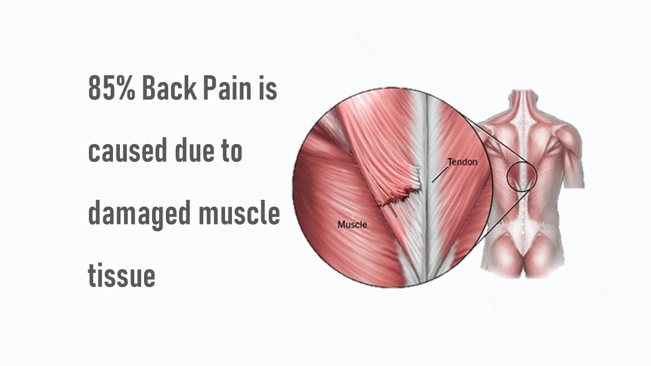Muscle Strain Treatment
The commonly prescribed treatment for muscle strain is pain killers but these medicines only block out the pain without addressing the root cause of the problem which is the injury.
Over 90% of all muscle injuries are caused by strains and the back is one of the most common sites for a strain. Here are some treatments that focus on repairing damaged tissue.
Precision Medical Movements
X-ray and MRI tests only show damage to structures but they cannot pinpoint damaged or weakened muscles. But the
DSA (digital spinal analysis) test measures spine function so that the specialists can recommend an individualized treatment plan for each patient. Advanced physiotherapy along with medical movements will heal damaged tissue and improve muscle function.
Muscle Strain Exercise
A muscle strain is caused by overusing a muscle or using it in the wrong way and while rest is essential during the initial stage, it is equally important to transition to the ‘active recovery’ stage. Spine specialists will suggest stretching and flexibility exercises based on the severity of your muscle strain so that you don’t cause additional damage to the injured muscle.
Compression Therapy for Muscle Strain
Active compression improves blood flow in the injured area, which allows more oxygen to reach damaged tissues and this results in a shorter recovery time. Compression also helps to reduce swelling which in turn, reduces pain and discomfort.
Rehabilitation Muscle Strain Exercises
As your muscle strain heals, it is important to keep it flexible to prevent secondary problems such as a stiff back.
Spine specialists will recommend exercises that you can continue to practice in order to make sure that the strained muscle heals completely so that there is no chance of a re-injury at the same location.
If the pain from a strained back muscle keeps increasing or if you start to experience bladder issues, you should consult a spine specialist right away for a definite diagnosis
Muscle Strain Prevention
- Avoid injury by stretching daily.
- Stretch after your exercise regime.
- Start an exercise program after consulting your physician.
- Do a warm-up routine before strenuous exercises, sports, etc.
- Maintain a healthy weight as obesity can stress your muscles.
- Always maintain good posture.
When To See A Spine Specialist?
Mild muscle strain could be treated at home but if your symptoms don’t improve or persist despite muscle strain treatment, or if you experience numbness or tingling; then you should consider seeing a doctor.
If the pain from a strained back muscle keeps increasing or if you start to experience severe neurological symptoms such as bladder incontinence, you should consult a spine specialist right away for a definite diagnosis.


 Professional diagnosis required
Professional diagnosis required Chronic, can last for years
Chronic, can last for years Treatable with 4 weeks of QI Spine Therapy
Treatable with 4 weeks of QI Spine Therapy Professional diagnosis required
Professional diagnosis required Chronic, can last for years
Chronic, can last for years Treatable with 4 weeks of QI Spine Therapy
Treatable with 4 weeks of QI Spine Therapy Professional diagnosis required
Professional diagnosis required Chronic, can last for years
Chronic, can last for years Treatable with 4 weeks of QI Spine Therapy
Treatable with 4 weeks of QI Spine Therapy




